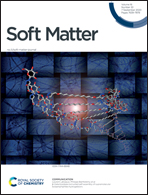Fluorescent patterning of paper through laser engraving†
Abstract
While thermal treatment of paper can lead to the formation of aromatic structures via hydrothermal treatment (low temperature) or pyrolysis (high temperature), neither of these approaches allow patterning the substrates. Somewhere in between these two extremes, a handful of research groups have used CO2 lasers to pattern paper and induce carbonization. However, none of the previously reported papers have focused on the possibility to form fluorescent derivatives via laser-thermal engraving. Exploring this possibility, this article describes the possibility of using a CO2 laser engraver to selectively treat paper, resulting in the formation of fluorescent compounds, similar to those present on the surface of carbon dots. To determine the most relevant variables controlling this process, 3 MM chromatography paper was treated using a standard 30 W CO2 laser engraver. Under selected experimental conditions, a blue fluorescent pattern was observed when the substrate was irradiated with UV light (365 nm). The effect of various experimental conditions (engraving speed, engraving power, and number of engraving steps) was investigated to maximize the fluorescence intensity. Through a comprehensive characterization effort, it was determined that 5-(hydroxymethyl)furfural and a handful of related compounds were formed (varying in amount) under all selected experimental conditions. To illustrate the potential advantages of this strategy, that could complement those applications traditionally developed from carbon dots (sensors, currency marking, etc.), a redox-based optical sensor for sodium hypochlorite was developed.



 Please wait while we load your content...
Please wait while we load your content...
